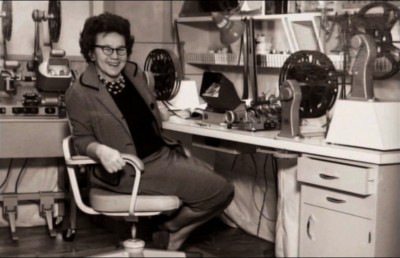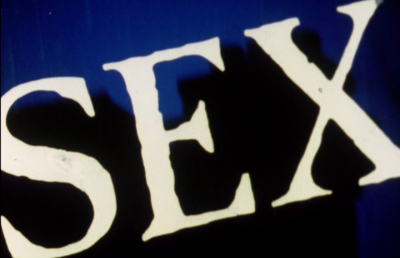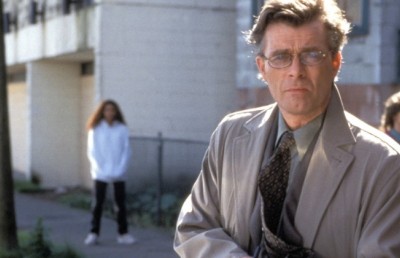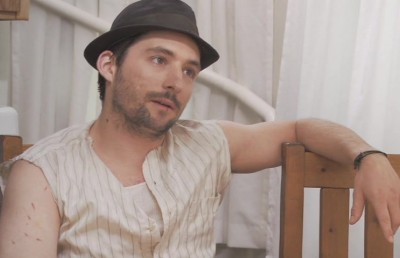Reflexive Hybrid Realism in Da Vinci’s Inquest: Surveillance Culture and Vancouver’s Downtown Eastside
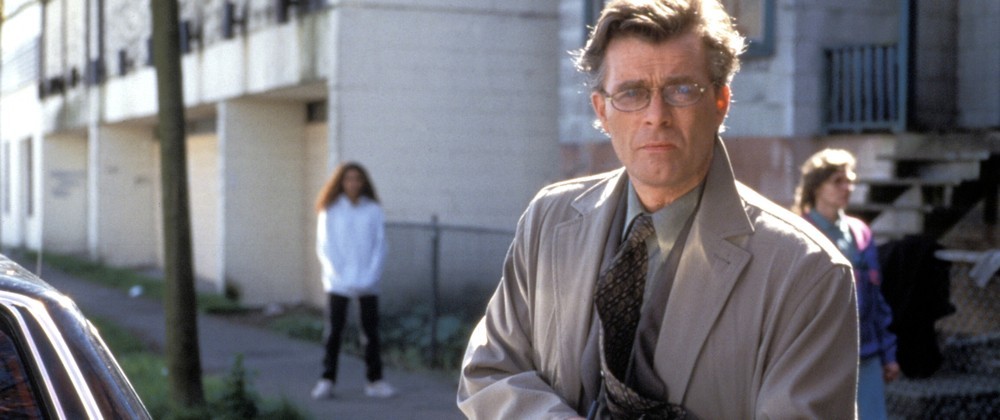
We can’t think we’re creating truth with a camera. But what we can do is reveal something to viewers that allows them to discover their own truth.- Michel Brault
Visibility is a trap.
- Michel Foucault
The long-running and award-winning Canadian Broadcasting Corporation (CBC) series, Da Vinci’s Inquest, aired from 1998-2005. 1 Vancouver’s inner city neighbourhood, the Downtown Eastside, is a central location in the series. 2 In this article I explore how Da Vinci’s Inquest showcases surveillance as both a policing strategy and a televisual convention. Occasionally, and particularly in episodes directed by creator/producer Chris Haddock (credited as director of eight and co-writer for all but eleven of the programme’s ninety-one episodes), the aesthetics and thematic concerns of Da Vinci’s Inquest imply self-conscious reflection on the programme’s role in increasing the visibility of the Downtown Eastside.
In Part I of the article I argue that the representation and evocation of surveillance in Da Vinci’s Inquest is linked with the “hybrid realism” of the series (Druick and Kotsopoulos, 1). After introducing the concept of hybrid realism, I provide an overview of how Da Vinci’s Inquest represents the Downtown Eastside and I analyse the thematic and aesthetic engagement with surveillance throughout the series. The stories told by Chris Haddock and his team invoke reality through televisual realism, direct cinema conventions and references to actual events. The correspondence between reality and fiction evident in Da Vinci’s Inquest thus facilitates a complex view of the Downtown Eastside. I propose that the series encourages and facilitates surveillance of the body, the body politic and, in particular, the Downtown Eastside; however, it also reveals the limitations of surveillance.
In Part II, I focus on the episode “Pretend You Didn’t See Me” from the fourth season. I argue that this episode demonstrates a self-conscious exploration of scopic regimes in the Downtown Eastside and that its alternation between direct cinema and continuity styles invites the audience to re-think both representational strategies. Moreover, this aesthetic re-thinking is inextricably linked with an invitation to reflect upon the social issues at the heart of the drama and at the heart of Vancouver, the city Da Vinci’s Inquest represents. As I will demonstrate, the show’s creative team highlights direct cinema’s transformation into an aesthetic component of hybrid realism. By juxtaposing this aesthetic with continuity editing, and creating parallels with the scripted concerns about surveillance and voyeurism, I argue that Da Vinci’s Inquest moves towards a reflexive form of hybrid realism, which invites heightened audience engagement by encouraging social critique.
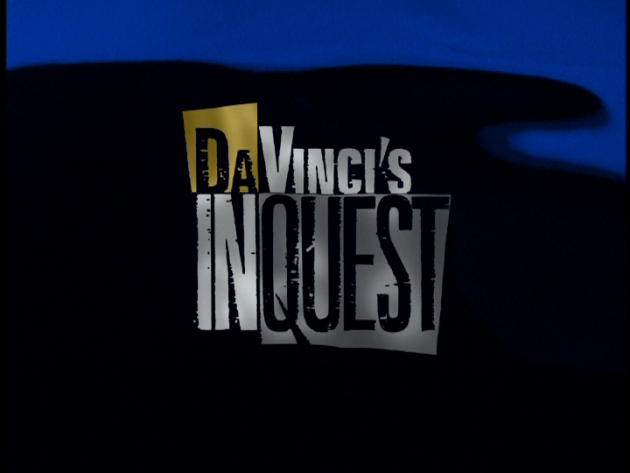
Hybrid Realisms
Da Vinci’s Inquest is a fictional television programme, but it is notable for mirroring contemporary events and dramatising real Vancouver issues in its storylines. Moreover, it adopts the conventions of television realism and occasionally adapts the aesthetics of documentary film. The programme consequently troubles the distinction between fiction and non-fiction. Recent scholarship on English-Canadian television has emphasised the importance of non-fictional modes in current and historical programming. Zoë Druick and Aspa Kotsopoulos propose the term “hybrid realisms” to describe television programmes that “straddle the border between reality and fiction” (Druick and Kotsopoulos, 1). While a 2009 Canadian Journal of Communication issue entitled “Reality/Television” focuses on the renewed interest in non-fictional modes since the international surge of reality TV (Bruce), Druick and Kotsopoulos stress that hybrid realisms predate reality programming and have been part of television since its inception. They trace the history of mixed genres in English-Canadian programming, suggesting that the phenomenon is especially evident at the CBC, where television-makers arguably inherited the strong documentary tradition of the National Film Board (NFB).
The Canadian public service context is crucial for understanding Da Vinci’s Inquest. 3 The CBC and NFB have similar mandates to reflect Canada and its regions; consequently fictional productions have an added imperative to relate to the real experiences and concerns of citizens. It is unsurprising that the CBC draws on the traditions of national filmmaking given the CBC’s and NFB’s shared history as crown corporations, government-owned commercial enterprises. 4 David Hogarth has suggested that documentary “shaped the way the medium [of television] was thought of and used in Canada” (Hogarth, 5). The docudrama has long been a popular format at the CBC and documentary has more subtly influenced crime television, among other genres (86). For instance, Mary Jane Miller notes the influence of the documentary tradition on the aesthetic of Wojeck, a 1960s series about a Toronto coroner and a clear antecedent of Da Vinci’s Inquest (Miller, 48). Wojeck experimented with documentary aesthetics in televisual fiction only two years after Don Owen and Gilles Groulx created feature films in the documentary style known as direct cinema. 5 It is thus essential to understand the use of documentary/direct cinema conventions in Da Vinci’s Inquest, and these will be explored in more detail below.
Although the national context has certainly informed Da Vinci’s Inquest, I also consider this series in relation to a broader phenomenon of hybrid genres in recent years. Although Da Vinci’s Inquest, first aired in 1997, predates the popular interest in reality TV and the events of September 11th 2001 – often recognised as the defining media moment of the contemporary era – we might retrospectively analyse the programme through the lens of what Geoff King calls “the spectacle of the real”. King refers to a paradox in contemporary television where fiction aspires to authenticity and non-fiction is increasingly contrived (King, 6). He suggests that we might understand various modes of verisimilitude in fiction and the spectacularisation of “real” people and events in non-fiction programming, from the news coverage of September 11th 2001 to reality television, as a spectrum of interlinked phenomena that evidence the multimedia spectacle of the real in screen media. Stella Bruzzi, similarly connecting audience perceptions of authenticity in fiction and non-fiction screen media, suggests that the events of September 11th 2001 “had a striking effect on how factual images are integrated into our culture, especially when it comes to film, television and media”. She employs the concept of “approximation” to describe works that “approximate reality rather than straightforwardly represent it”. 6 Bruzzi posits that contemporary audiences approach representations of reality differently since the advent of digital technologies that allow them to manipulate images as well as interpret them. This suggestion is comparable with John Ellis’ conviction that “we are seeing the emergence of an increasing sophistication of attitudes towards the truth-claims of moving image and sound” (Ellis, 184); however, Bruzzi and King importantly note that this affects how we understand fiction as well as “factual” footage – the two are mutually implicated. If we can accept that “documentary is a negotiation between reality on the one hand and image, interpretation and bias on the other”, we might also apply this logic to fiction that approximates the real (Bruzzi, 6-7). King’s “spectacle of the real” and Bruzzi’s “approximation” thus offer useful frameworks for understanding the intersection of fiction and reality in Da Vinci’s Inquest‘s use of realist conventions, documentary aesthetics and its dramatisation of real crimes and social issues.
The approximations of reality in Da Vinci’s Inquest are essentially promotional, capitalising on audience interest in “real crime” and “real people”. The series demonstrates a strategic engagement with reality, designed to create special appeal for viewers familiar with corresponding events in the “real world”, but without compromising entertainment value for those who lack appropriate context. Most storylines draw from Vancouver news events and Haddock has made no secret of the fact that the character Dominic Da Vinci was inspired by Larry Campbell, Vancouver coroner and Mayor (2002-2005). Campbell also acted as a consultant for the series and has writing credits for ten episodes, most of them co-written with Haddock. Although Haddock is careful to point out that there are significant differences between Campbell and the fictional character, this connection between the fictional and the real Vancouver figures proved a productive reciprocal relationship. In 2002, “Campbell’s supporters in the mayoral campaign happily capitalized on the connection, gleefully sporting ‘Mayor Da Vinci’ buttons on their lapels and convincing voters that the long-ruling NPA party cared little for the downtrodden Downtown Eastside” (Weber). Three years later, mock-election posters placed around Vancouver, advertising Dominic Da Vinci as “democratically elected” and “unbought and unbossed”, was a memorable advertising campaign for the Da Vinci’s Inquest spin-off, Da Vinci’s City Hall (2005-2006). 7
Another significant interplay between Da Vinci’s Inquest and real events occured when programme writers made allusions to “the pig farm” in season five. This referred to the “real-life” discovery of human remains at the Port Coquitlam farm of Robert Pickton in 2002, and Pickton’s subsequent charge with the murders of many of Vancouver’s missing women. Da Vinci’s Inquest explores the abduction, abuse and murder of sex workers from the very first episode, drawing attention to real life cases at a time when the media and police had taken little interest. The television drama thus had a quasi-documentary function, staging scenarios that suggested the women might have been targeted by one or several serial killers. However, the pig farm references in season five are the first time an explicit link is made to real events. The allusions are made in conjunction with Angela Kosmo’s investigation into disappeared Downtown Eastside women but are never explained in the script. In this instance Da Vinci’s Inquest risked alienating international viewers: awareness of the Pickton case could perhaps be taken for granted in Canada, where the news was widely reported, but caused confusion elsewhere, particularly for viewers watching episodes some years after their initial Canadian run. 8
As fans of Da Vinci’s Inquest were referred to the “real world” to explain the pig farm references, followers of the missing women case were referred to Da Vinci’s Inquest on at least one occasion. Maggie De Vries, whose sister Sarah De Vries went missing from the Downtown Eastside in 1998, describes the conversation between the Toronto hosts of CBC’s Midday programme, that followed an interview she had given in the Downtown Eastside’s Oppenheimer Park: “They talked about how dreadful it was that all these women had vanished without a trace, and how hard it must be for the families. Then the female host said that all you had to do was watch Da Vinci’s Inquest and there was the story”. Although this might be a rather tactless, if unintentional, advertisement of another CBC programme there is, as De Vries describes, some truth in the host’s remark. Yet the conflation of actual suffering with dramatised entertainment trivialises her own painful involvement:
And she is right, in a way. That is why I have never watched Da Vinci’s Inquest. Not because I don’t want to watch shows about crime or about human misery, but because I don’t want to watch entertainment that so closely mirrors my own experience. Still, I thought that it was inappropriate to compare these real events to a television show. Her comment made light of the disappearances, although that was not her intent (de Vries, 232).
De Vries’s experience poignantly reveals the hybrid realism of Da Vinci’s Inquest. Haddock’s decision to weave references to real events into his television drama results in representations that are part fiction and part documentary. These examples demonstrate that the discourse surrounding the disappearance of women from the Downtown Eastside crosses the frame of the television set and the assumed boundary between fiction and non-fiction.
The Da Vinci’s City Hall advertising campaign and the references to “the pig farm” clearly demonstrate Haddock’s interest in foregrounding the interpenetration of television and reality in his show. Kim Elliot has suggested that Da Vinci’s Inquest occasionally features:
an unintentional moment of self-reflection on the role the show plays as mediator of an image of a real place, real struggles, permitting the rest of Canada and the world to glimpse the Downtown Eastside from a safe distance behind our TV screens (Elliot, 15).
I would argue that such self-reflection is intentional. For the most part Da Vinci’s Inquest does not use reflexive devices. However, as I will demonstrate, certain episodes contain occasional lines of dialogue and aesthetic resemblance to direct cinema that connote reflection. This reflexivity is structured in ways that, rather than distancing the viewer by breaking the illusion of narrative, invites the audience to reflect upon their own implication in, and surveillance of, the challenges facing residents of the show’s fictional Downtown Eastside, and of the real neighbourhood from which it draws inspiration.
Representing Place
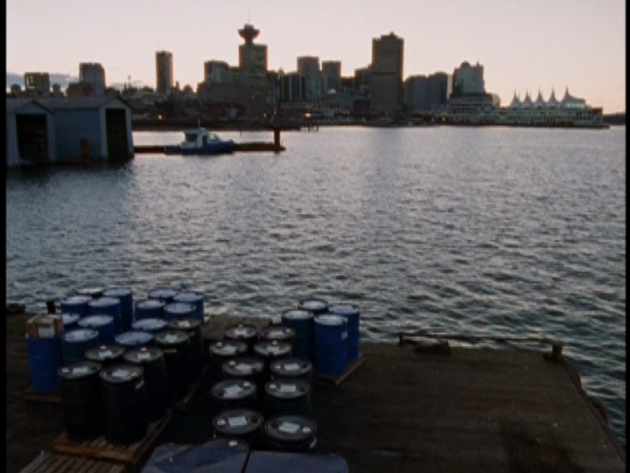
In Da Vinci’s Inquest, we are introduced to the “Eastside” as the workplace of Vancouver coroner Dominic Da Vinci, pathologists Sunny Ramen and Patricia Da Vinci, and homicide detectives Leo Shannon, Mick Leary and Angela Kosmo. In the programme, the Vancouver Police Department, Coroner’s Office and Court, and pathology labs are all located adjacently in the neighbourhood that local viewers will recognise as the Downtown Eastside. Chance meetings between characters occur overwhelmingly on the streets outside or in nearby cafes, notably the Ovaltine Café, a distinctive neon-signed establishment on Hastings Street. The streets are presented as a mixture of colour and dreariness: walls adorned with murals or posters and graffiti, dilapidated hotels with partially functioning neon signs, boarded up and faded shop fronts, and a large number of ethnically diverse, but often aged and male, pedestrians. Investigations frequently take the protagonists into alleyways where bodies are found, evidence is retrieved from garbage bins, and witnesses are questioned. Police looking for information seek out sex workers and small-time drug dealers in these locations; it is implied that this is a small community where people know each other’s business.
The debut episode, “Little Sister”, foregrounds a number of issues which recur throughout the seven seasons of Da Vinci’s Inquest and the subsequent season of Da Vinci’s City Hall: the murder and disappearance of women from the Eastside; rumoured plans for a casino and new cruise ship terminal adjacent to the Vancouver port; the existence of badly run and maintained single room occupancy hotels; and Vancouver’s high levels of alcohol and drug overdoses. Viewers familiar with Vancouver are likely to associate these issues with the Downtown Eastside but the name of the neighbourhood is unmentioned. They might also recognise clearly signposted locations, such as the Arco and Beacon Hotels and the 2 Jay’s Café on Hastings and Pender Streets. The types of hotels featured in this episode, often offering ill-maintained, low-rent, single room occupancies, are found in the Downtown Eastside and are commonly associated with it.
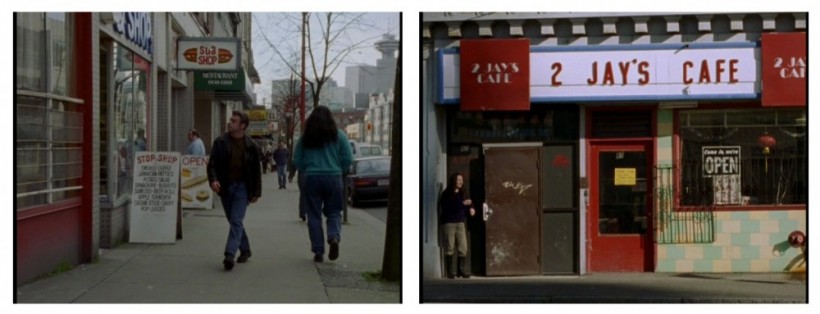
It is clear from this first episode that location is constructed so that it has a two-tiered appeal. For the most part, references to the Downtown Eastside are substituted by “Eastside” and “skid row”, thus constructing a generic image of an impoverished inner city neighbourhood that holds meaning for international viewers. Meanwhile, a careful strategy of signposting – clear shots of street signs, business fronts and distinct locations – enable local viewers to form deeper connections. As Sarah Matheson notes in an article about industrial television filmed in Toronto, “[t]he phenomenon of place involves the negotiation of a variety of discourses and images that informs the individual’s experience of particular places, including, for example, the meanings specific landscapes hold”. Viewers will connect with the location of a television programme on a variety of levels, and people who have had “personal relationships with these urban spaces” will extract more enjoyment from a programme, linking onscreen images with more tangible experiences (Matheson, 133).
A programme’s ability to encourage multi-level identification with place is particularly useful for the CBC. As a crown corporation, the CBC must appeal to national and international audiences to justify its subsidies and bring in additional income. It must consequently balance the necessity of achieving international sales and attracting sufficient audiences to satisfy advertisers with its mandate to “be predominantly and distinctively Canadian” and “reflect Canada and its regions to national and regional audiences while serving the special needs of those regions” (Policy 1.1.1 CBC Mandate). Creating a local sense of place while also retaining generic appeal facilitates achievement of both cultural and market goals. There is some debate, however, over the CBC’s ability to “reflect Canada and its regions”. Serra Tinic suggests that CBC production in Vancouver (and other Canadian regions outside of Ontario) has been increasingly marginalised since the 1970s (Tinic, 65). The west coast, for instance, has limited representation in CBC drama. Before Da Vinci’s Inquest, The Beachcombers (1971-1990) was the only notable series to represent the region. In 1994, however, the CBC sought out proposals for a Vancouver-based drama as part of a regional revitalisation initiative. Da Vinci’s Inquest was the chosen proposal, but Tinic emphasises Toronto’s decision-making role, suggesting it is symptomatic of the CBC’s superficial and inconsistent regional policy and their refusal to grant creative control to the Vancouver production centre. Their choice, she suggests, “reinforced the enduring sentiment that Toronto’s definition of regional production was primarily concerned with setting rather than socio-cultural specificity in prime time”, because Da Vinci’s Inquest “self-consciously and explicitly refers to the site and context of the city but in a manner that emphasizes the generic markers of any crime or murder-mystery program” (Tinic, 92). While Tinic’s interrogation of the decision-making process is valuable, she misrepresents the programme that came out of it: Da Vinci’s Inquest thoroughly engages with the history, geography and current affairs of Vancouver and was a significant step in regional revitalisation, given the duration of the programme and its spin-off productions, Da Vinci’s City Hall and the television movie The Quality of Life (2008), Haddock’s subsequent west coast series Intelligence (2005-2007), and fruitful collaborations with central figures in the Vancouver independent film industry.
As I have noted, some generic markers are used in Da Vinci’s Inquest to attract audiences unfamiliar with Vancouver. However, I argue that there is socio-cultural specificity in the show’s engagement with the local landscape and local issues. Many of the storylines relate to the particularities of Vancouver’s geography and history. For instance, plot points engage with Vancouver’s identity as a port city on the Pacific Rim in “Cheap Aftershave” (4:4) where a Chinese boat migrant dies on hunger strike in a detention centre. The long history of Chinese migration to Vancouver and subsequent human rights abuses are explored throughout season four where an excavation reveals the remains of Chinese people in shipping crates. Vancouver’s proximity to the American border is evident in “The Hunt” and “The Capture” (1:12-13), when Vancouver police forces must work with US authorities to track down a pair of murderers, and in “All Tricked Up”, (3:8) where two Mexican teenagers are found hidden in shipping trucks that have been transported from Portland.
In season seven Vancouver homicide detectives find themselves working in conflict with United States DEA (Drug Enforcement Administration) agents over the death of a Canadian marijuana smuggler, who happens to be an old friend of Mick Leary’s (7:5). The sympathetic portrayal of a marijuana smuggler, drawing on Vancouver’s renowned, if somewhat stereotyped, tolerance of cannabis use, is symptomatic of the show’s efforts to represent the city’s unique approach to drug issues. Vancouver’s trajectory towards harm reduction policies, rather than the “war on drugs” approach more common in the U.S., is also evident as Dominic campaigns for a safe injection site in the Downtown Eastside.
Furthermore, Dominic pushes for a red light district in an effort to protect vulnerable women from violence. As mentioned, there are a number of storylines about murdered or abducted prostitutes echoing historical events in Vancouver. Tragically, the abuse of society’s most vulnerable women is far from unique to Vancouver. However, Da Vinci’s Inquest engages with the particular social issues that arise from Vancouver’s geography and history. The migration of aboriginal youth from the reserve to Vancouver, and commonly the Downtown Eastside, is explored in the first three episodes, “Little Sister” (1:1-3), where a tribal policeman comes to Vancouver to try and find his sister. The region’s history of genocide and human rights abuses is evident in storylines involving pathologist Patricia Da Vinci, who sees parallels between historical genocide and the unnecessary tubal ligation (sterilisation) of aboriginal women by a white male doctor (4:8).
I see the location of the Downtown Eastside as central to the socio-specificity of Da Vinci’s Inquest. The existence of this neighbourhood in a city with a glowing reputation for liveability is a fundamental contradiction that lies at the heart of the series. Haddock claims, “Vancouver often gets portrayed internationally as a very pristine, lovely little white city. Well, that’s not the city I know” (“Behind the Scenes: Vancouver”). While the illegal trade and economic polarisation portrayed in Da Vinci’s Inquest are also evident in cities around the world, the particular histories of the displacement of First Nations, Chinese immigration, the transition from a resource economy to a service economy, and urban revitalisation collide in Haddock’s Downtown Eastside.
It is notable that the Downtown Eastside is rarely referred to by its full name until the third series. At this stage, the writers refer to it more frequently within the programme and in extra-textual promotional material. For instance, on Haddock Entertainment’s Da Vinci Online, the synopsis for “That’s the Way the Story Goes” (3:1) reads, “Dominic ‘tilts at windmills’ while investigating a death on the streets of his beloved downtown Eastside” (“Episode #27 That’s the Way the Story Goes”). The suggestion that the neighbourhood is beloved to the protagonist personifies it and frames the location as central to the series and Dominic’s behaviour. “That’s the Way the Story Goes” is concerned with economic polarisation in the Eastside and the tensions that arise when expensive property developments exist alongside extreme poverty. A number of other episodes in the season mention the “downtown Eastside” in dialogue (and in online synopses) and feature storylines that engage with issues relevant to the DTES. “It’s Backwards Day” (3:11) focuses on a doctor’s son who has become a heroin addict and is living in the Downtown Eastside, frequently robbing a convenience store to fund his habit. “The Sparkle Tour” (3:12) implies police discrimination and mistreatment of a First Nations leader from the Downtown Eastside. Economic polarisation, addiction and institutional racism are all issues raised by Da Vinci’s Inquest prior to this season, yet it is only now that they are explicitly connected to the named location. Viewers are invited to get to know Dominic’s “beloved” neighbourhood and to engage with the issues with which he is concerned.
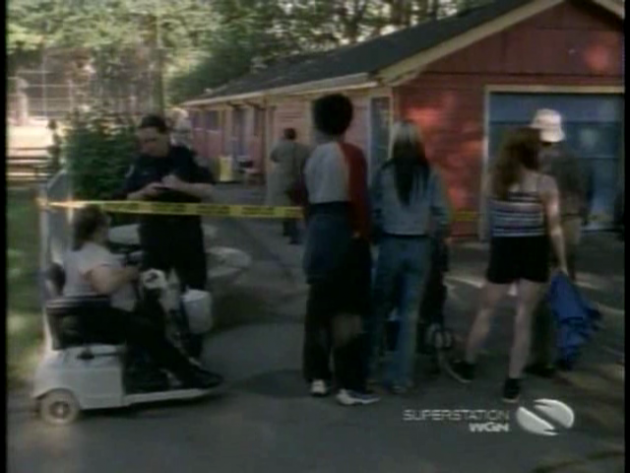
Season four continues to familiarise viewers with the Downtown Eastside and the issues that particularly affect its residents. “Oppenheimer Park” is a rare episode named for a Downtown Eastside location rather than a line of dialogue, and focuses on the mysterious death of an elderly woman living in the park toilets. “Pretend You Didn’t See Me” is concerned with a surveillance camera proposal in the DTES, as I will subsequently explore. Moreover, a tendency towards longer narrative arcs is evident from season four onwards, and one of these focuses on Angela Kosmo’s investigation into violence against Downtown Eastside prostitutes. The references to the pig farm begin in season five, and this inferred conclusion to the case allows the narrative of the series to take a different direction: Angela becomes primarily occupied with investigating the death of a drug dealer in collaboration with her Eastside informant Sue. As the season progresses Sue implicates a corrupt policeman, Detective Brian Curtis, in this murder and more generally in the Eastside’s drug and vice trades. Curtis begins to blackmail a city councillor whom Dominic is relying on for support in the coroner’s campaign for a red light zone and a safe injection site.
In seasons six and seven of Da Vinci’s Inquest and in Da Vinci’s City Hall, the writers continue to explore the connection between Downtown Eastside issues and the complex politics of the wider city. From the outset, Da Vinci’s Inquest storylines regularly implicated the rest of Vancouver in the struggles of the Downtown Eastside. However, long story arcs increasingly replace the subtle connections and individual incidents of these early episodes. The more complex chains of events in later seasons imply endemic corruption throughout the city that impacts upon the Downtown Eastside. The programme evolves from a crime drama, predominantly focusing on police procedures, to a to a hybrid genre focusing on policing, politics, big business and power. Glen Lowry suggests that the new focus is increasingly generic and relies “on its ability to reproduce American-style politics and political figures for a growing international audience” (Lowry, 265). Dominic’s interventions in the Downtown Eastside become more abstract and are dependent on trade-offs with politicians, developers and the Police Chief.
I agree to an extent with Lowry that in Da Vinci’s City Hall the protagonist is increasingly “removed from the city and the streets that gave him life” (Lowry, 265). However, the writers continue to make frequent references to the Eastside as Dominic, now Mayor of Vancouver, realises his ambition for a red light district to prevent harm to Downtown Eastside sex workers, and intervenes between police and the activist and/or homeless squatters of a vacant Downtown Eastside department store. Moreover, the evolving relationship of retired policeman Zack McNab with the neighbourhood fills the vacuum created by Dominic’s departure. Indeed, I would argue that as Dominic enters City Hall, despite Dominic’s physical distance from the neighbourhood, the programme becomes more dependent on the dramatisation of Downtown Eastside struggles, reworking historical incidents such as the Woodward’s squat and the opening of North America’s first safe injection site, and imagining potential solutions such as a red light district.
Surveillance of the Body and Body Politic
As a contemporary crime drama, Da Vinci’s Inquest showcases police surveillance techniques as a means of solving crime. However, the limitations and complexities of surveillance are also, on occasion, revealed. Several episodes show officers positioned discreetly to monitor suspects, and a few episodes feature the use of wiretaps to gather evidence. 9 Writers reference surveillance and security camera footage on only a couple of occasions, notably in “Pretend You Didn’t See Me” where Dominic states his opposition to surveillance cameras in the Downtown Eastside. In one of only a few episodes that demonstrates the value of security cameras for providing evidence, the footage is not used to solve crimes but to undermine the power of senior police officers and expose their conflicts of interest. For instance, in “A Delicate Bloodbath” (7:11) Leo Shannon catches Police Chief Jacobs having an extra-marital affair with Sergeant Kurtz on hotel security footage. This contributes to the programme’s increasing exploration of misconduct within the police force, and foreshadows the themes of power struggles and internal surveillance within city institutions explored in Da Vinci’s City Hall (2005-2006) and Intelligence (2006-2007), the subsequent CBC series made by Haddock.
Pathologists and forensic investigators on Da Vinci’s Inquest use microscopes and x-rays to make visible parts of the body that are usually invisible, demonstrating the surveillance of the body by using technology that can monitor what the naked eye cannot. The focus on forensic science is not central to Da Vinci’s Inquest in the way that it is to U.S. contemporary, CSI (2000), which, according to Martha Gever, emphasises the necessity of visualising the body and the social body using digital devices in order to uncover the truth (Gever, 445). In keeping with Mary Jane Miller’s description of CBC drama “at its most distinctive”, and in contrast to CSI’s usual conclusive triumph of science and technology (Boyle 102 and Gever, 445), Da Vinci’s Inquest often takes “ambivalent moral stances; it challenges its audience with open or downbeat endings” (Miller, 386). Even when science and technology provide missing information in Da Vinci’s Inquest, this does not always lead to a conviction. The three-part storyline with which Da Vinci’s Inquest made its debut is characteristic: when Sunny fails to find incriminating evidence in her comparison of the victims’ stomach contents with a sample of food from the café of a suspected killer, Charlie Josephs, Patricia takes a second look through the microscope and finds a rare pathogen present in both. These are deaths that Patricia pronounced accidental on her initial examination. Before this evidence (and evidence from a surveillance team) can be used to convict the killer, he is found dead. It is implied that Goose Flowers, the brother of one of the victims, has taken action after Detective Leo Shannon, frustrated at the previous lack of evidence, identified the killer to Goose. Although Charlie is under surveillance by police, Goose has apparently avoided detection after Leo warned him Charlie was being monitored. Consequently, the text reveals that direct and technology-assisted surveillance are fallible and thoroughly reliant on human interpretation and intervention.
The aesthetics of Da Vinci’s Inquest might be recognised as a type of televisual realism that reinforces the logic of surveillance footage as authentic. As John Hartley and John Fiske note in Reading Television, television realism is a popular mode for crime drama. They describe how the credit sequence of The Sweeney uses
“grainy” still photographs denoting a Flying Squad car (which is an unmarked saloon) approaching the camera in a succession of closer shots…the realistic look of the stills refers us to the codes of surveillance photography (as used by the Flying Squad) (Hartley and Fiske, 169-170).
The Sweeney’s creators invoke a parallel between the policing activities depicted in the programme and the audience reception of the programme. Both look and learn by way of the camera, which enhances vision and creates a record of visual occurrences. Fiske and Hartley write that the credit sequence is a ritualised boundary, a convention that helps the audience to accept the realism of the programme. Ritualised boundaries such as credit sequence and filler shots are seen in Da Vinci’s Inquest, the style varying from season to season. In season three, a series of black and white “grainy” shots establish the location before a new scene begins. For instance, in the episode “That’s the Way the Story Goes”, we see images of the Downtown Eastside. These show buildings at different angles and street-level shots of people sitting on the sidewalk.
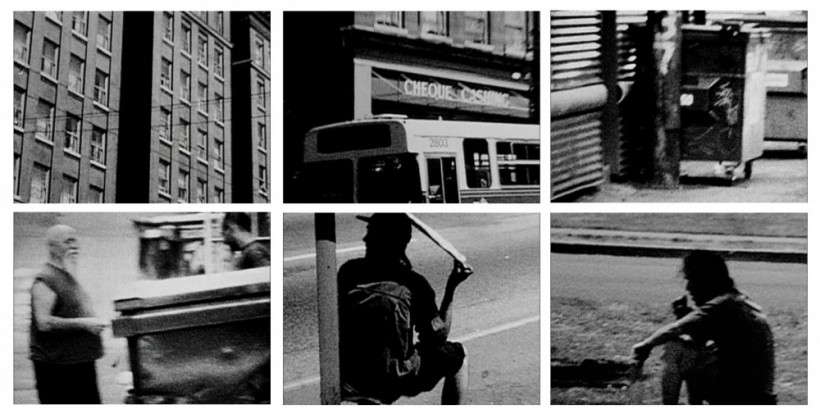
These filler shots connote authenticity through their low quality. As Bruzzi has observed, “[t]here is an inverse relationship between style and authenticity: the less polished a film, the more credible it will be found” (Bruzzi, 9). The graininess of images suggests that the camera was small and unobtrusive and that it might have incidentally or accidentally captured an unstaged Downtown Eastside scene, as might surveillance or home-movie footage. Of course, Da Vinci’s Inquest stylises footage to suggest authenticity: the television-makers have likely selected the images carefully to set the scene and manipulated the images post-production to achieve the grainy effect. In addition to the filler shots, grainy black and white images are also used in scenes where suspects are under interrogation in the homicide interview room. For instance in “Bang Like That” (2:11) Leo’s interviews with witnesses and suspects are partially represented in a grainy black and white image. The aesthetic suggests that these are the images captured by the interview room camera, lending an aspect of authenticity, when actually the camera captures the exchange between characters much more intimately and fluidly than a fixed surveillance camera.

A surveillance aesthetic is used to poignant effect in “Ugly Quick” (4:5) when Detective Mick Leary is investigated for the shooting of another officer and finds himself on the other side of the interview table with the camcorder focused closely on his face. The writers overturn the usual order of surveillance: in this instance the police officer faces the gaze of the camera, his actions under scrutiny. Mick is a sympathetic character: the audience is unlikely to blame him for an accidental shooting in a confusing and pressurised situation. In this situation, the surveillance technologies seem harsh and unecessary, whereas in other episodes, when the audience identifies less with the suspect, the technologies seem justified. The placing of police under surveillance troubles audience understanding of who is deviant and who is exonerable, and prompts audiences to consider if the surveillance apparatus at the police station connotes culpability through its scrutinising gaze, even if the suspect turns out to be innocent.
Stylised filler and interview room images refer to the codes of surveillance and suggest a parallel between the cameras used in police work and television cameras. It is a convention that contributes to televisual realism but is entirely contrived. In contrast, the scenes of Da Vinci’s Inquest that employ a direct cinema aesthetic are apparently filmed with minimal manipulation, thus occupying a different position on the spectrum of hybrid realisms or “the spectacle of the real”, and making a more complex claim to reality. Although the direct cinema aesthetic is also a convention chosen to convey authenticity, it is acheived through lack of stylisation and potentially reveals unstaged, unintentional actions, thus functioning as a form of surveillance in contrast to stylised footage that merely invokes surveillance. The episode “Pretend You Didn’t See Me” is particularly distinctive for its use of direct cinema aesthetics and thematic interest in surveillance, and thus allows for analysis of how the two intersect.
Notes
- Da Vinci’s Inquest’s cast and crew have won Gemini, Leo, Writers Guild of Canada and Directors Guild of Canada awards (“Reviews and Awards”). ↩
- The Downtown Eastside is the city’s oldest neighbourhood, once the commercial heart of the city yet now its poorest postcode. A highly contested landscape, it is increasingly faced with gentrification, displacing poorer residents. For recent news on this tension, see Lee, 2014. ↩
- The CBC has had a hybrid public/private format since 1953 when license fees were abolished. Since then, it has depended on advertisers in addition to government subsidies to fund its productions. In recent years more emphasis has been placed on enhancing economic efficiency and competitiveness with private broadcasters, arguably to the detriment of quality in Canadian productions. The broadcaster’s parliamentary appropriation has been cut in recent budgets and the high cost of domestic drama and the relatively small domestic audience has led to a decrease in this type of programming. What drama is produced must be easily sold internationally to balance the CBC budget (Beaty and Sullivan, 73-75). As I prepare this article, the CBC has announced job and programming cuts (Eastwood). ↩
- The CBC became a full crown corporation in 1938, at this time broadcasting radio prior to the invention of television. In the same year, the Government asked John Grierson to advise them on national film production, leading to the 1939 founding of the NFB. ↩
- I refer to the films Nobody Waved Goodbye (Don Owen, 1964) and Le Chat dans le Sac (Gilles Groulx 1964). These films were largely improvised and made “reluctantly by the NFB despite its continuing commitment to documentaries”. Nobody Waved Goodbye was made with a budget for a half hour documentary on juvenile delinquency, dealing with the same theme, and Gilles Groulx wanted to “eliminate the boundaries between documentary and fiction” (Gianetti and Leach, 342-345). ↩
- These quotations come from Bruzzi’s abstract about her Leverhulme research project (and forthcoming book by Routledge, 2015/2016), which I sought out after hearing her unpublished talk on “The Documentary Real” at the University of Nottingham on February 16th, 2011. ↩
- The advertising campaign is documented by photographer knightbefore_99. ↩
- U.S. viewers have sought explanations on the Da Vinci’s Inquest forum (Honda and mmaatagirl). ↩
- The use of wiretaps in this programme is minimal compared to U.S. show The Wire (2002-2008) with which comparisons might usefully be drawn. Da Vinci’s Inquest is less thematically structured than The Wire, although the two programmes are similarly interested in city institutions and the impact of municipal decision making upon social conditions and in turn, crime and policing. Both have a fairly bleak outlook on the influence of money and power in preventing significant change and social progress. ↩


